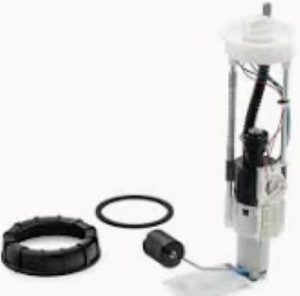This makes it very important to take certain precautions to be safe at all times, especially during the installation work or maintenance and replacement time of a fuel pump. Perhaps the most critical safety step is disconnecting the battery with the ignition key to avoid accidental sparks that could ignite fuel vapors. Vehicles work on a 12-volt electrical system and all you need is a little spark for combustion if there are fuel vapors in the air. First and foremost, this simple step reduces the risk of fire by up to 90%, so it is an important measure.
Another safety tip is to operate in a well-ventilated space. Gasoline Vapors Are Explosive and can build up in enclosed areas leading to an explosion. Better ventilation provides more space for these vapors to escape and dissipates them, reducing chances of explosion. This safety feature was driven home in early 2020 when a man replacing his fuel pump with the engine running caused a fire, completely destroying his garage. An additional 50% reduction in vapor concentrations can be achieved with increased airflow promoting the use of a fan: it renders the workspace even safer.
Another important warning to be highlighted is the type of protection and care that must be used when handling the pumpsWith fuel, such as gloves, safety glasses. Upon contact, fuel can irritate the skin and cause eye damage and due to the chemicals in gasoline extended exposure is harmful for your long-term health. Nitrile gloves also protect the hands from these chemicals, and safety glasses will prevent accidental fuel drops from damaging the eyes. Fuel pump elements might be sharp or hot, and protecting safety gear reduces the dangers of getting burn damage.
The most important thing is not to have open flames or sparks in the working area. I think this is no smoking and I would bet probably no sparks or tools within the vicinity either. Electrostatic charges are powerful enough that it can be dangerous to work with from time to time, even just static electricity alone but grounding yourself before you install the watercooling equipment has never hurt. Even minor heaters and resources can be unsafe when near energy pumps as fuel vapors can erupt at temp of 125°C (257°F).

Properly releasing fuel pressure before removing the pump is another important final step. Today, the fuel systems of most vehicles are working at quite a high level of pressure — usually around 40 to perhaps 60 PSI. If you disconnect fuel lines without releasing the pressure first, gasoline can spray out and cause a fire hazard or personal injury. It uses a fuel pressure gauge to de-gas the system before parts are broken down, etc., thereby eliminating much of the potential for accidents.
Fuel pump cut-off switches are one example of fuel pump safety measures to avoid the same scenario above. These switches kill power to the fuel pump if a collision is detected, stopping fuel from flowing and reducing fire hazards after an accident. Sales say such a switch makes vehicles 40% less likely to catch fire in a crash.
To know more regarding to Fuel Pump safety and installation tips visit here –fuel pump.